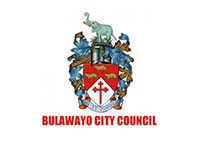
A STUDY has revealed a rising threat to Harare’s water due to increased algal growth in Lake Chivero, the capital city’s main water source.
Algal blooms can contaminate drinking water, resulting in health issues for humans and wildlife,
The research was presented at the Aeronautical Congress in Milan, Italy.
Muongeni Manda, a postgraduate researcher at Chinhoyi University of Technology, analysed Lake Chivero’s water extent and quality between 2017 and 2023.
Her findings indicate increasing nutrient concentrations, leading to eutrophication and detrimental algal blooms.
“Lake Chivero’s water quality is declining due to increased levels of nutrient concentrations, including nitrogen and phosphorus, a condition known as eutrophication,” Manda said.
“This results in algal blooms degrading the water quality and aquatic life by depleting oxygen in the water. The cause is likely to be urbanisation and agricultural activity.”
The study employed Digital Earth Africa’s Modified Normalised Difference Water Index and Normalised Difference Chlorophyll Index to track water extent and chlorophyll-a concentration.
- Monavale residents oppose building of cluster houses in vlei
- Poor planning, illegal settlements fuel Harare’s worsening water crisis
- ‘Lake turn’ phenomenon hits Harare water supplies
- 146 000 megalitres of raw sewage gush into Chivero
Keep Reading
Her findings revealed increased alga presence, potentially causing oxygen depletion and fish deaths.
Urban growth, siltation and the invasive water hyacinth threaten Lake Chivero’s delicate ecosystem.
“Extra water can dilute the salinity and alkaline levels of lakes, creating a less hospitable environment for algae and, therefore, a reduced food source for flamingos,” Manda said.
“Where water extent and chlorophyll concentration have both increased, it is likely that the rainwater washed additional nutrients into the lake, strengthening alga populations.”
Digital Earth Africa’s Kenneth Mubea emphasised the study’s significance: “Manda’s findings have weighty relevance in protecting Lake Chivero’s habitat and Harare’s water supply.
“It’s crucial we address these concerns proactively.”
Experts warn that if left unchecked, algal blooms can have devastating consequences for Harare’s water supply and ecosystem.
The lake has faced increased ecological threats, including pollution from urban growth, siltation and invasion of the fast-growing water hyacinth.
These invasive aquatic plants are known to overrun bodies of water, resulting in congested waterways and the death of submerged native plant species.
Lake Chivero is a reservoir on the Manyame River in Zimbabwe, situated downstream from Harare city and its surrounding settlements.
It provides the main water supply for Harare and is used for irrigation, fishing and serves as a habitat for birds.
Chivero is home to a delicate ecosystem of shoreline vegetation and aquatic life.
This delicately balanced ecosystem is prone to seasonal changes in the lake’s water levels and the resultant water quality and salinity can have huge impacts on the water provided to the City of Harare.










